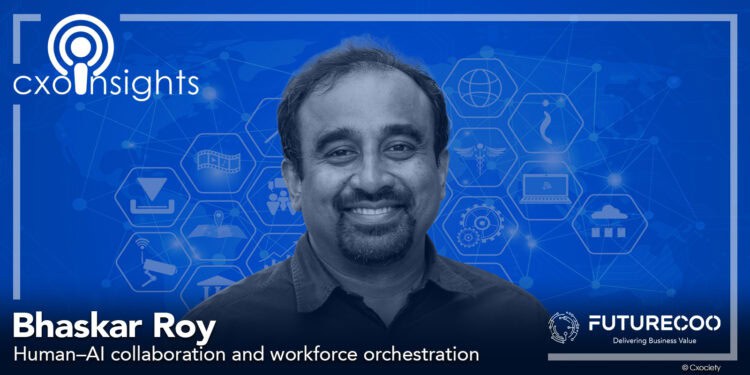In 2025, CEOs overwhelmingly view AI as a top strategic priority and a transformative force that defines the competitive landscape (KPMG 2025 Global CEO Outlook). They are significantly increasing investment in AI, with a strong focus on achieving a return on investment (ROI) within one to three years and integrating AI across all business operations.
Around the world, the boardroom conversations that once centred on “Will this (AI) work?” have become “How fast can we orchestrate our entire workforce – human and digital – to capture the next wave of advantage?”
Across Asia, the journey to AI inclusion is a mix bag ranging from thinking about it, watching with apprehension, trying out via pilots, and moving ahead (with a bit of luck and a lot of prayer). While most eyes are on the CIO to orchestrate the integration of the technology, the success of AI inclusion rests just as well on the shoulders of the chief operating officer (COO) who must monitor the progress of the integration while ensuring uninterrupted business as usual.
As we move through 2026, the integration of artificial intelligence into enterprise operations is no longer a matter of if, but how. For chief operating officers across Asia, the emergence of AI agents as “digital workers” presents both unprecedented opportunity and organisational complexity.
Drawing from insights shared by Bhaskar Roy, chief of AI products and solutions at Workato, during an exclusive interview in October 2025, this narrative outlines the evolving landscape of human–AI collaboration and workforce orchestration from an Asian COO’s vantage point—balancing operational efficiency, cultural norms, and scalable technology infrastructure.
From automation to collaboration: Redefining operational roles
Historically, operational leaders in Asia have leaned heavily on deterministic automation tools like Robotic Process Automation (RPA) to streamline workflows. However, as the Workato executive observes, AI represents a paradigm shift:

“AI now has reasoning power, and it can infer a lot of things… it can go find things. But then when it needs to go deterministic, it can call what we call enterprise skills.” Bhaskar Roy
Unlike RPA, which follows rigid scripts, AI agents operate with contextual awareness, drawing from multiple data sources and adapting in real time.
For COOs, this means reimagining roles within their organisations—not as tasks to be automated, but as collaborations between human and digital workers.
Roy notes that companies are beginning to appoint “agent managers” to oversee these new digital team members: “They’re understanding what the agent is doing, how they’re interacting with people… constantly managing whether it be adding new skills to it, providing it with new context, etc.”
While this trend is nascent in Asia, Roy anticipates its eventual adoption: “I’ve not seen that in any other regions [outside the US], but it kind of makes me think that over a period of time, that kind of role might start showing up here in Asia as well.”
Cultural hierarchies and the flattening effect of AI
One of the most profound implications for COOs in Asia lies not in technology, but in organisational culture. “Asian culture is a very hierarchical culture,” Roy remarks, contrasting it with Western models. AI agents, however, democratise access to information and execution capability.
As Roy questions: “All of a sudden, my performance is improving. I have additional knowledge and context that I earlier would not have… How does that change organisational structure?”
These dynamic challenges long-standing managerial practices. Where junior employees once relied on layers of approval to access data or execute decisions, AI agents embedded with appropriate permissions can now act autonomously—within defined guardrails. The COO must therefore navigate a dual transformation: upgrading systems while recalibrating leadership expectations.
According to Gartner’s 2025 prediction of the “composable organisation”—where teams form and dissolve around projects—AI may accelerate this shift in Asia, even if cultural inertia slows initial adoption Gartner, “Top Strategic Technology Trends for 2026,” October 2025.
Upskilling at scale: Building trust through participation
A critical success factor identified by Roy is workforce readiness. At Workato, a summer 2025 initiative mobilised 100 employees across functions to “build an agent that can do better than that particular person”—what they termed the “best person on steroids.” The result? “28 genies came out of it… they automatically upskilled themselves… and they know how to best use those agents in our work.”
For Asian COOs, this “agent jam” model offers a blueprint. Rather than imposing top-down AI mandates, COOs can drive organic adoption by empowering teams to co-create solutions. As Roy puts it: “Once they get there, it almost grows virally, mainly because they know… how to collaborate with those agents.”
This participatory approach also builds the foundational trust necessary for human–AI collaboration—something that cannot be engineered through policy alone.
Security, governance, and ethical guardrails
With great capability comes great responsibility. Roy stresses that COOs must work closely with CIOs and CISOs to establish robust governance:
“There is a lot of security and governance that needs to be put in place as to who can see what information… an agent should always have the permissions that I have, nothing more than that.” Bhaskar Roy
This is especially pertinent in Asia, where data privacy regulations—such as Singapore’s PDPA and Japan’s APPI—are tightening. Missteps in AI deployment could expose organisations to compliance risk and reputational damage.
Moreover, ethical considerations loom large. Roy notes that agents must be coached as a new employee: “These are the values you have to stick to. These are things you have to stick to. There are some things which are non-negotiable.”
Embedding company values into AI behaviour via prompt engineering and knowledge bases isn’t optional—it’s operational hygiene.
For the COO, this means collaborating with HR to define ethical boundaries and with legal teams to ensure alignment with local regulations.
Measuring what matters: KPIs for hybrid teams
Traditional performance metrics no longer suffice. Just as human employees are measured against role-specific KPIs—quota attainment for sales, ticket resolution for support—so too must AI agents be held accountable. “Here are the KPIs, and you need to work towards those KPIs,” Roy asserts. Critically, this creates a new managerial skill: “Everyone is now a manager of some kind of agent… just like you would coach a human, you must learn the skills of coaching an agent.”
For COOs, this implies redesigning performance management systems to reflect hybrid team outputs. Success isn’t just agent uptime or task completion—it’s the combined impact on customer experience, revenue growth, and operational efficiency.
As Roy highlights, CEOs are already asking: “What are the things that you're doing with agents to improve productivity?” Boards expect measurable ROI, not pilot projects.
Building a flexible, future-proof foundation
Finally, scaling human–AI collaboration demands architectural foresight. Roy advises COOs to “choose the right identity platform” and avoid betting on a single AI model: “Tomorrow model B might come, which is far superior to Model A. Then what do you do?” Instead, he champions “a flexible platform that can grow… as new models come in.”
Integration with existing workflows is equally vital. “Bring that agent to the application itself”—be it Slack, Microsoft Teams, or internal tools— “so that people user behaviour… you're not forcing user behaviour to change on day one.” This user-centric deployment strategy minimises resistance and maximises adoption.
Conclusion: Orchestrating the human–AI future
In 2026, the Asian COO’s mandate is clear: orchestrate a workforce that seamlessly blends human judgment with AI capability. This requires strategic alignment with CIOs and CISOs, cultural adaptation, and relentless focus on high-impact use cases.
As Roy aptly summarises: “Don’t always start experimenting… There are enough proof points… work on figuring out what are the core key business impacts… that you can move with an agent.”
The future belongs not to those who automate everything, but to those who orchestrate wisely ensuring that AI augments, rather than replaces, the uniquely human elements of trust, ethics, and collaboration.
Click on the PodChats player (above) to listen to Roy as he elaborates human–AI collaboration and workforce orchestration.



